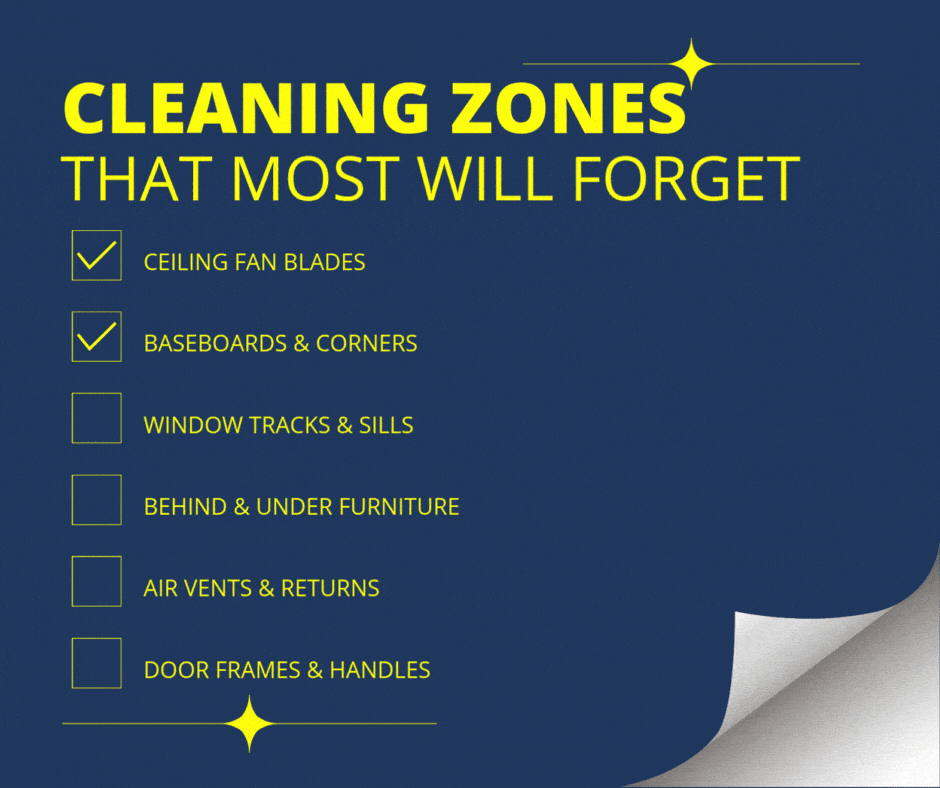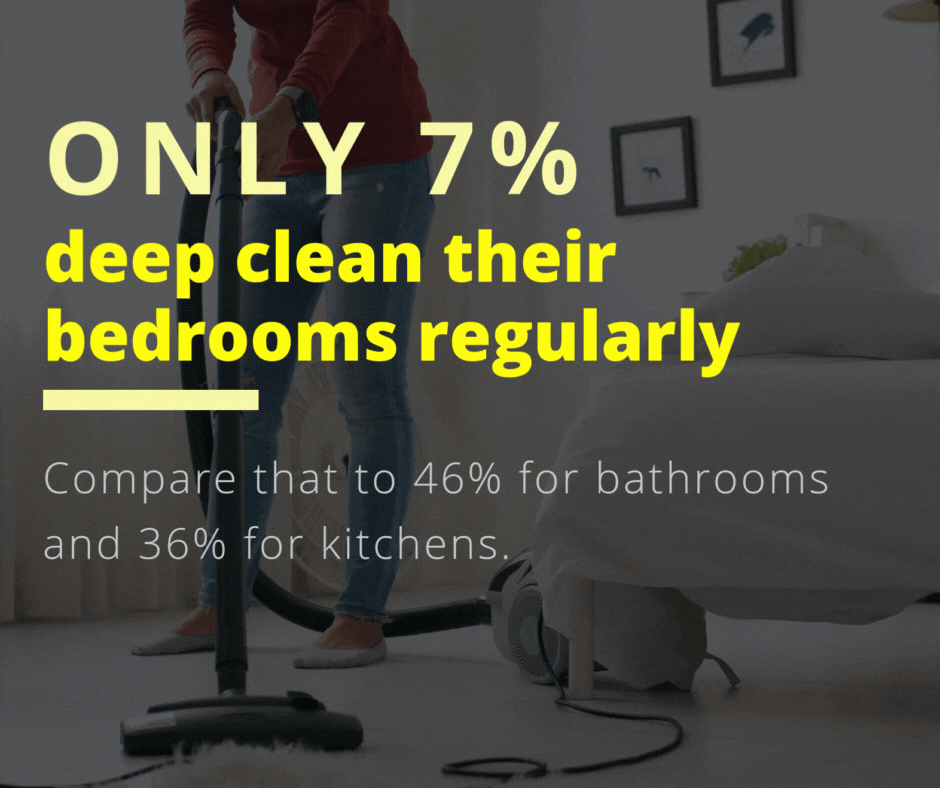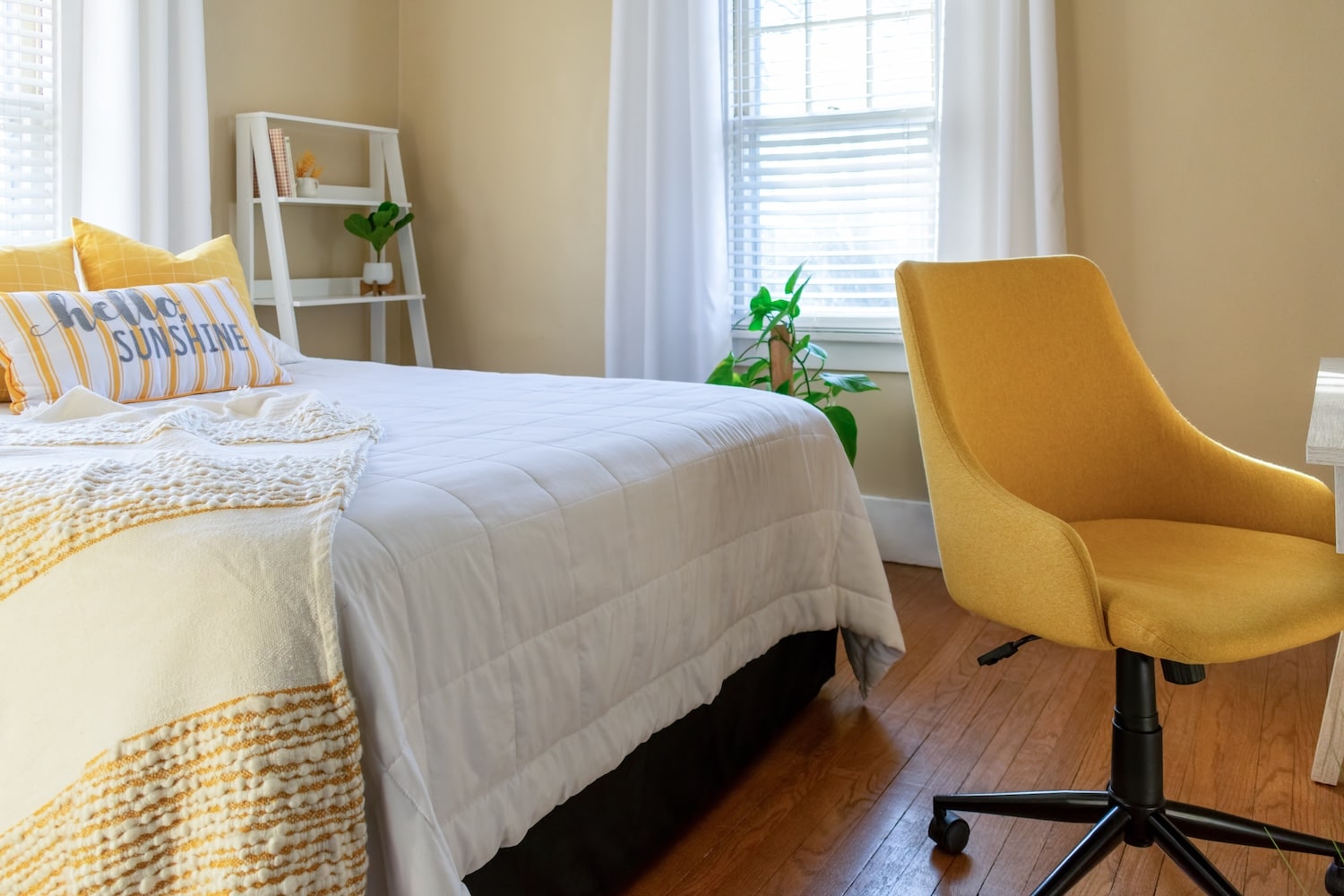The Febreeze and fluffed pillows won’t cut it. This guide walks you through how to clean and prep your bedroom before showing your home or opening it up to service workers.
The bedroom might seem low priority when prepping your home for a showing or inspection. It’s not. This is where buyers envision winding down, storing their things, and sleeping every night. It’s also where home inspectors pick up on signs of hidden problems that could affect the sale.
1. Start With the Lighting and Vibe
The moment someone steps into the room, they read its energy, even if they don’t realize it. Is it dark and stuffy? Light and airy? Does it feel cramped or peaceful?
What to do:
- Let in as much natural light as possible. Open blinds fully and pull curtains to the sides. Wash windows inside and out.
- Edit the furniture layout. Remove oversized pieces or anything that blocks walkways. You want the room to feel open and breathable.
- Clear all visible clutter. This includes nightstand stacks, laundry piles, cords, excess pillows, or desktop clutter.
A clean bedroom is good…A calm room is better. Space to walk, light to see, and air to breathe make everything feel easier, including decision-making for buyers.

2. Deep Clean Forgotten Zones
Inspectors aren’t judging your style. They’re looking for signs of long-term maintenance, and some of those signs hide in places most homeowners never touch.
Pay special attention to:
- Under the bed. Vacuum thoroughly. Dust and pet hair down here can signal neglect.
- Behind and under furniture. Use a long attachment to clean around headboards, dressers, and corners.
- Ceiling fans and vents. Dusty blades or blocked returns could suggest poor air circulation or HVAC issues.
- Baseboards and trim. Wipe down with a damp cloth. Dust, scuffs, and cobwebs attract attention even when you think no one’s looking.
- Outlet covers and wall plates. Clean or replace discolored ones. These small details speak volumes.
3. Air Quality & Lingering Odors
Smell and air quality go hand in hand. If the room smells musty, stale, overly perfumed, or just “off,” it will be noticed. Air that feels heavy or damp can also raise questions about mold, ventilation, or hidden moisture problems.
Improving air quality:
- Wash all bedding, including sheets, comforters, pillow shams, and throw blankets
- Vacuum rugs, drapes, and under furniture thoroughly
- Air out the room for a few hours before showings or inspections
- Use a small air purifier or set out charcoal bags to absorb odors
- Check the bedroom return vent and replace dirty filters
- Avoid masking odors with candles or sprays. Neutral is better than artificial
- Use a hygrometer to make sure humidity is between 30 and 50 percent
- Add a houseplant if the room has light. Peace lilies and snake plants can help improve air quality naturally
If the room feels stuffy even after cleaning, check for moisture buildup or lingering pet dander. Poor air quality might not show up in a photo, but it can absolutely affect a buyer’s experience in person.
4. Inspect the Bedroom Yourself First
Put yourself in the inspector’s shoes. What would you flag? Do a DIY walk-through and check:
- Windows for moisture damage. Are there signs of condensation, soft wood, or mildew around the trim?
- Ceilings and corners. Look for staining, bubbling paint, or discoloration — all signs of a possible roof leak or past water intrusion.
- Closets. A musty smell inside could point to ventilation issues or mold growth, especially if the closet backs up to a bathroom or exterior wall.
Bonus Tip: Use a handheld moisture meter. These cost around $20 and can help you detect water issues before your inspector does.
5. Make the Closet Count
A packed closet feels like the house is short on space. A clean, organized bedroom closet makes the home feel bigger and better maintained.
How to prep:
- Remove 30 to 50 percent of what’s inside. That means off-season clothes, stacked boxes, or anything that doesn’t need to be there.
- Space hangers evenly. This gives a boutique-style look that suggests ample storage.
- Keep the floor clear. No shoes, bins, or bags should crowd the space.
- Wipe down closet shelves and baseboards. Dust loves to collect here.
- Make sure doors glide smoothly. Repair sticky sliders or misaligned hinges.
6. Address Simple Cosmetic Stuff
These aren’t major repairs — just basic maintenance that prevents a lot of unnecessary worry during an inspection.
Check and fix:
- Loose or flickering light bulbs
- Outlets that don’t work or spark
- Cracks in drywall near windows or doors
- Worn window tracks or stuck sashes
- Peeling or chipped paint near baseboards
Take photos before and after your cleanup. Compare them to make sure the room looks and feels professionally staged without needing to hire anyone.

Other Recommended Maintenance
Don’t overlook these final touches:
- Vacuum and mop the floor again the morning of the showing
- Test all smoke detectors in bedrooms and replace batteries if needed
- Clean windowsills and blinds thoroughly
- Oil squeaky door hinges
- Label any light switches that aren’t intuitive (especially if the light is controlled by a lamp instead of an overhead fixture)
When to Call a Professional
If you spot any of the following, don’t wait until it shows up in the inspection report:
- Visible mold on walls, trim, or ceilings
- Water stains or bubbling paint around windows or in corners
- Cracks in the ceiling or sloped flooring
- Persistent odors that return even after cleaning
These can all point to more serious issues. Getting a mold inspection, air quality test, or pre-listing home inspection can help you solve the problem early and potentially prevent buyer hesitation or repair credits during negotiations.
Conclusion
A clean bedroom isn’t just about appearance, it’s a chance to show potential buyers and inspectors that the home is cared for, safe, and ready for the next chapter.
A little extra effort in this space can help a showing go smoothly and an inspection pass with fewer issues. You don’t need perfection, but you do need to prepare with purpose.
PI Home Inspection offers comprehensive, pre-listing home inspections that can catch the things you miss. Let our experts walk through the space with a trained eye so you can move forward with confidence.

